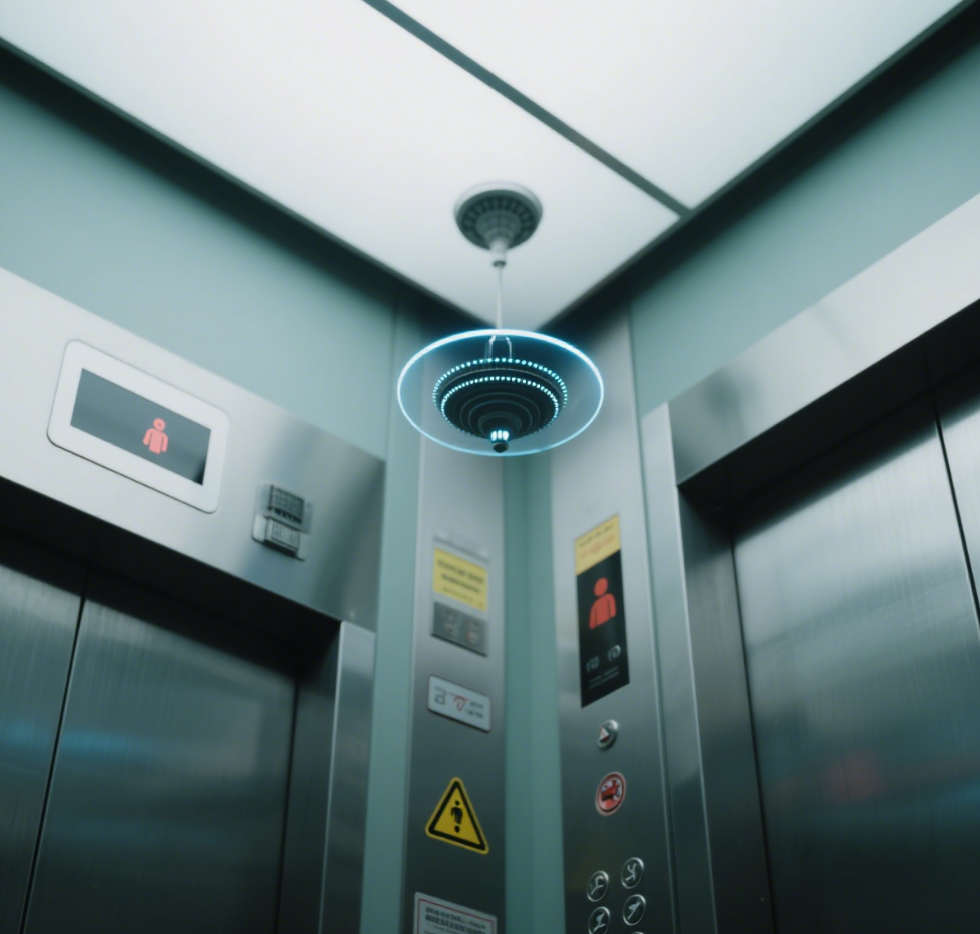Why is Elevator Safety a Growing Concern?
Elevators, escalators, and vertical transportation systems are essential in modern urban environments, serving residential buildings, commercial complexes, and transit hubs. However, crowding, abnormal passenger behavior, and mechanical failures pose significant safety risks. Traditional monitoring systems, such as weight sensors or cameras, often have limitations in precision, privacy protection, and real-time responsiveness.
This is where millimeter-wave (mmWave) radar emerges as a transformative technology. By providing high-resolution, all-weather sensing, radar enables real-time detection of occupants, behavioral anomalies, and environmental changes in elevators and vertical transportation systems.
Linpowave V200 radar solutions are optimized for compact spaces like elevator cabins and escalator zones, offering precise detection capabilities for both individuals and small groups.
How Does mmWave Radar Detect Occupants Accurately?
Occupant detection is critical to prevent elevator overcrowding and ensure compliance with capacity limits. mmWave radar sends high-frequency electromagnetic waves and detects reflections from human bodies, even in low-light or visually obstructed conditions.
-
Radar can distinguish individual passengers, track movement patterns, and estimate occupancy density in real time.
-
Unlike cameras, radar ensures privacy protection, as it does not capture identifiable images.
-
Data from radar sensors can trigger automated alerts or control signals to the elevator management system, ensuring safe operation.
Linpowave V300 series supports high-precision detection and can be integrated with building management systems for scalable deployment.
How Can Radar Prevent Accidents and Overcrowding?
Overcrowding and abnormal passenger behavior are leading causes of elevator accidents. mmWave radar enhances safety by:
-
Monitoring density and movement: Detecting when cabins or escalator sections exceed safe occupancy limits.
-
Identifying unusual behavior: Detecting rapid, erratic, or prolonged motion that may indicate a fall, fainting, or emergency situation.
-
Triggering preventive measures: Sending alerts to building staff or automatically limiting cabin access.
In large transit hubs or commercial buildings, radar systems help maintain crowd flow, prevent congestion, and reduce the risk of accidents during peak hours.
For reference, IEEE research on elevator safety and crowd management highlights the benefits of real-time occupant sensing technologies, reinforcing mmWave radar’s role in public safety.
How Can Radar Enhance Escalator and Vertical Passage Safety?
Beyond elevators, escalators and moving walkways are high-traffic vertical transport areas where falls and collisions are common risks. mmWave radar enables:
-
Real-time detection of people approaching escalators, ensuring proper spacing and preventing pushing or overcrowding.
-
Detection of objects or loose clothing near steps, triggering automated warnings or temporary stops to prevent entanglement.
-
Monitoring of passage areas for flow bottlenecks, allowing facility managers to redirect traffic efficiently.
By integrating radar with building automation systems, operators can maintain a continuous safety loop across all vertical transport zones.
Integration with AI and Building Management Systems
The full potential of mmWave radar is realized when combined with AI analytics and IoT-enabled building management systems:
-
AI-based risk assessment: Identifies unusual patterns such as sudden surges or irregular crowd movement.
-
Automated alerts and control: Adjusts elevator dispatch or escalator speed based on real-time occupancy.
-
Data-driven planning: Helps facility managers analyze peak traffic, optimize scheduling, and plan maintenance proactively.
This integration transforms vertical transportation from a purely mechanical system into a smart, predictive, and safe environment.
Practical Benefits of mmWave Radar in Vertical Transport
-
Reduced accident risk: Early detection of overcrowding and unusual behavior prevents falls and injuries.
-
Improved operational efficiency: Real-time occupancy data allows for intelligent dispatch and traffic flow optimization.
-
Privacy protection: Unlike cameras, radar ensures passengers’ personal information is not recorded.
-
Scalability: Radar sensors can be deployed across multiple elevators, escalators, and corridors for centralized monitoring.
For more technical guidance and deployment examples, see Linpowave Industrial & Smart Building Blog.
FAQ: mmWave Radar in Smart Elevators and Vertical Transport
Q1: Can mmWave radar detect individual passengers in crowded elevators?
Yes. High-resolution radar sensors can distinguish individual movements even in dense occupancy conditions.
Q2: Is radar affected by lighting or cabin visibility?
No. mmWave radar operates independently of light and is reliable in visually obstructed or low-light conditions.
Q3: How does radar improve privacy compared to cameras?
Radar sensors only detect movement patterns and occupancy, without capturing identifiable images, ensuring compliance with privacy regulations.
Q4: Can radar integrate with existing building management systems?
Absolutely. Linpowave radar modules can connect to elevator control, security, and IoT platforms for automated safety and monitoring.
Q5: Are there international safety standards supporting radar use in elevators?
Yes. Radar systems comply with international safety and electromagnetic exposure standards, such as FCC regulations and IEEE guidelines.
Conclusion
Millimeter-wave radar is a game-changer for vertical transportation safety. By providing accurate occupant detection, behavior monitoring, and integration with AI-driven management systems, it enhances the safety, efficiency, and reliability of elevators, escalators, and pedestrian passages.
As urban infrastructure grows increasingly complex, radar-enabled vertical transport systems ensure a safer, smarter, and more privacy-conscious environment for passengers.



